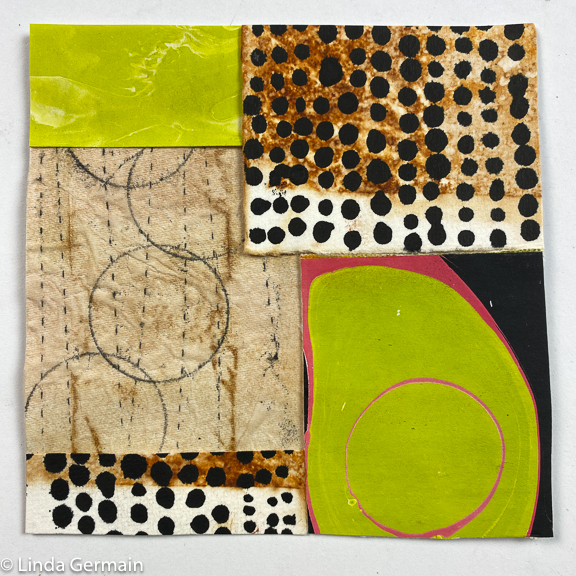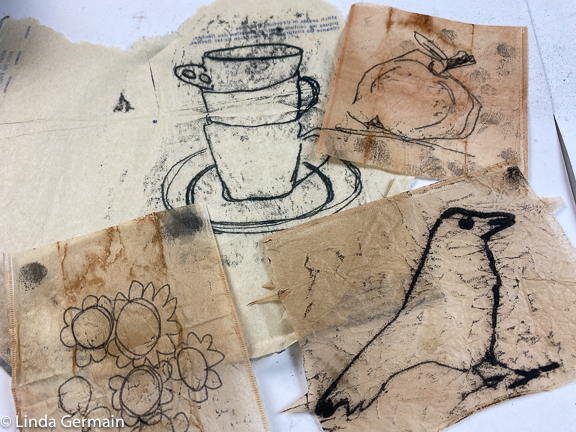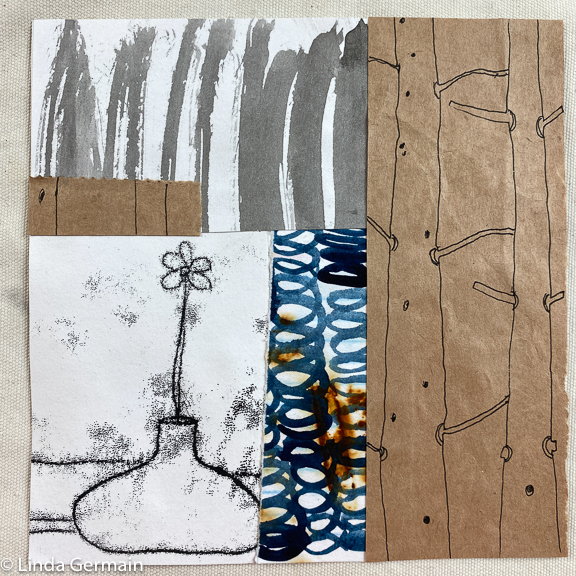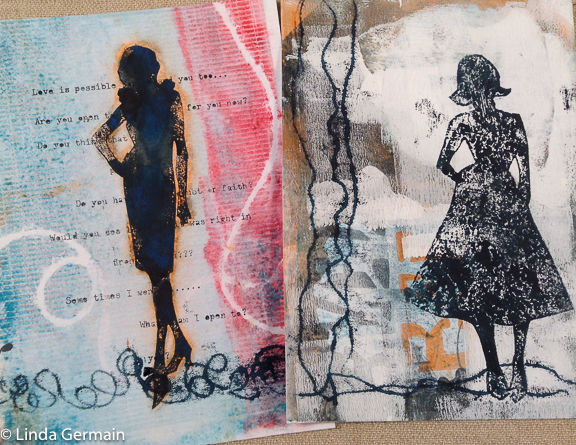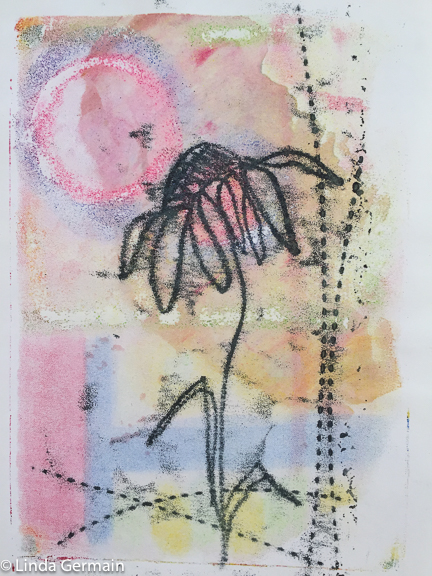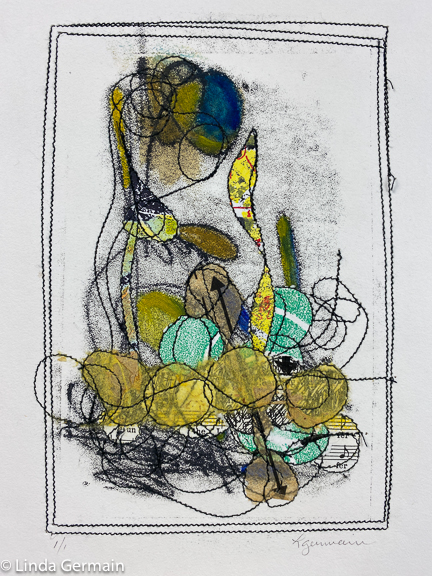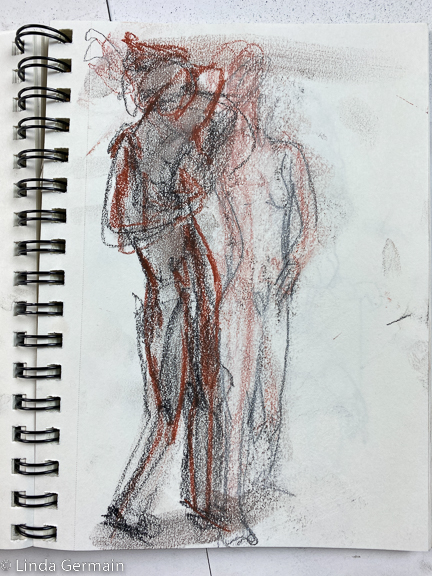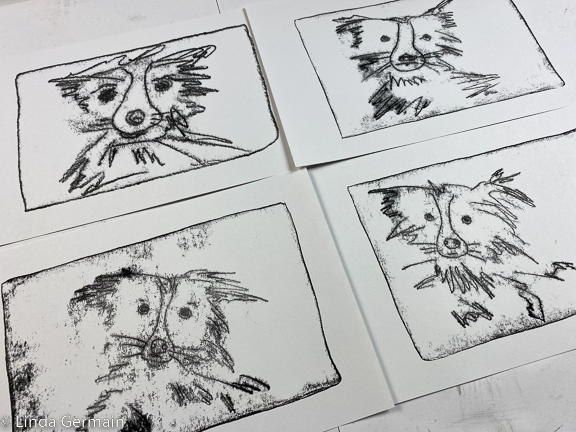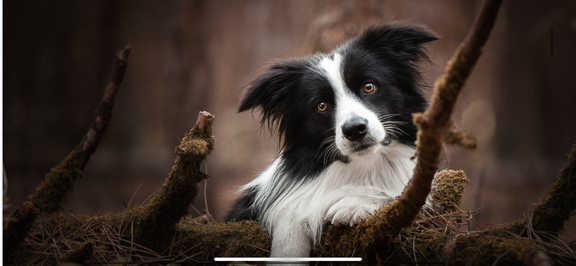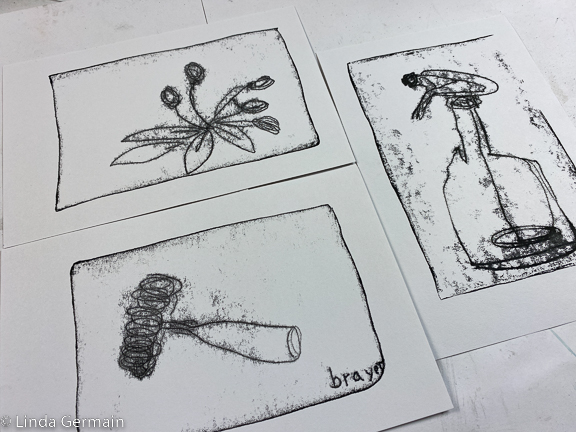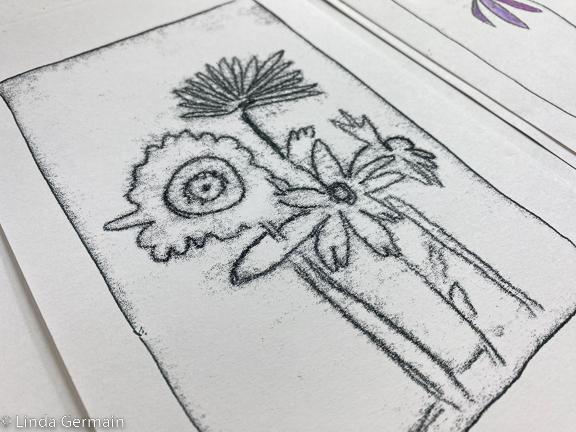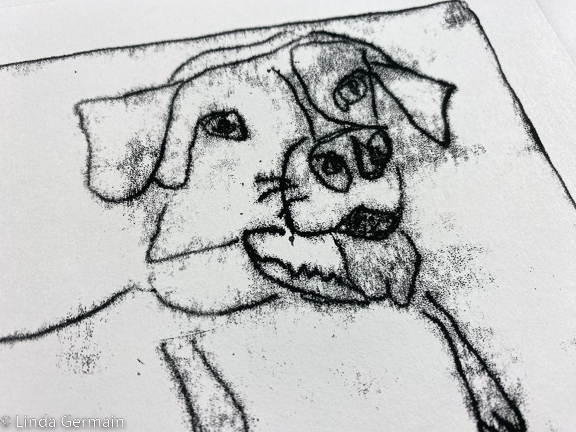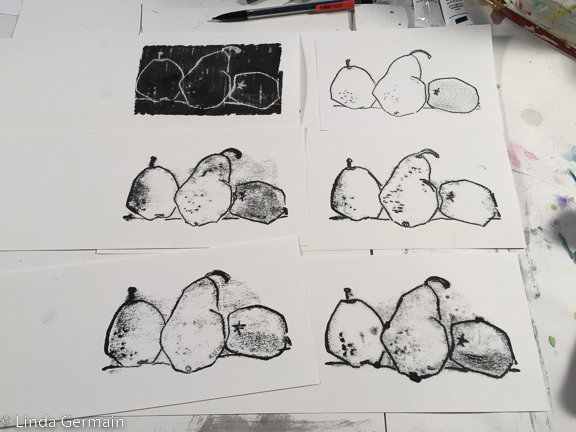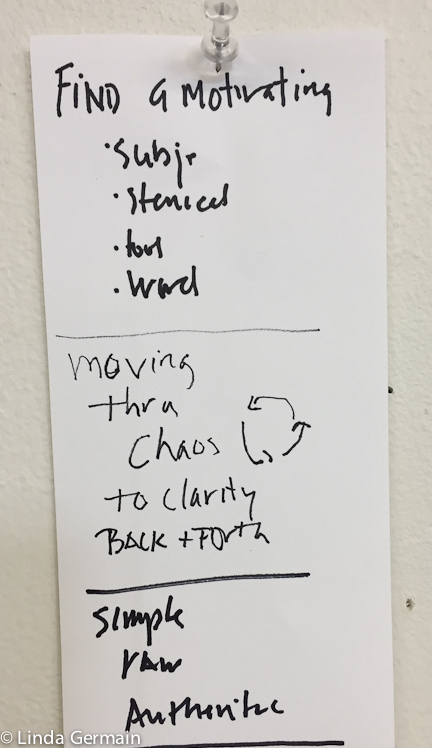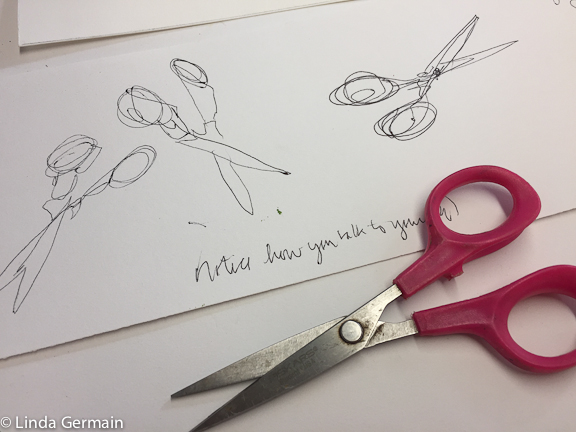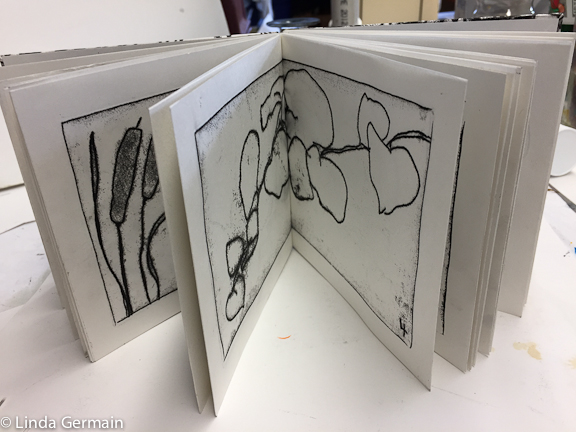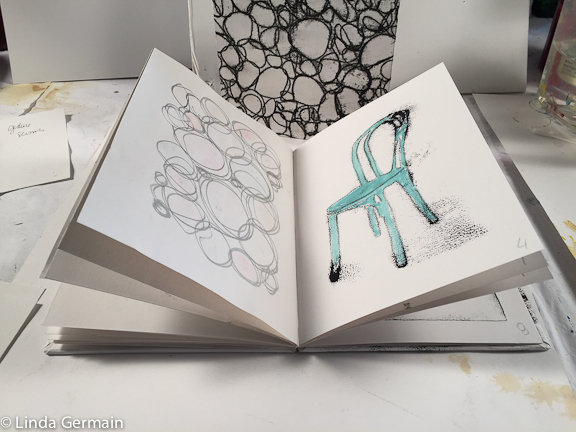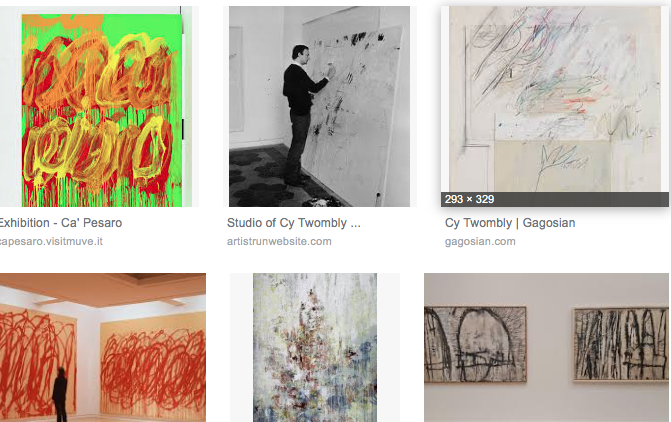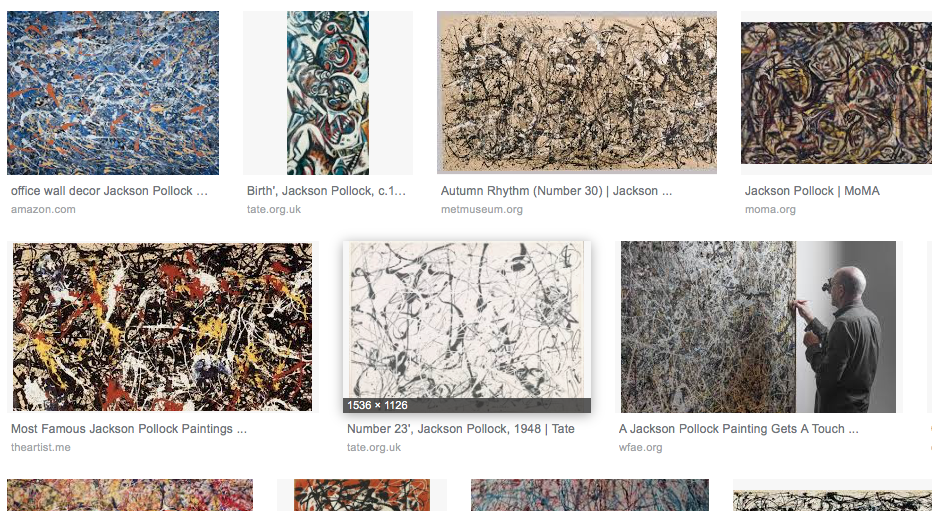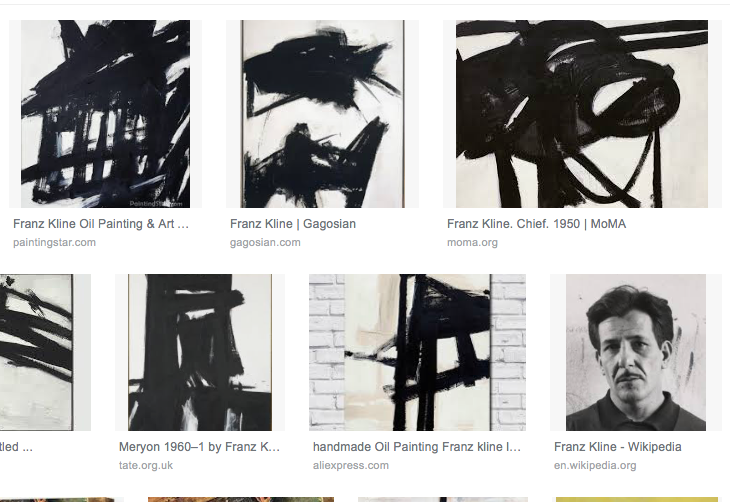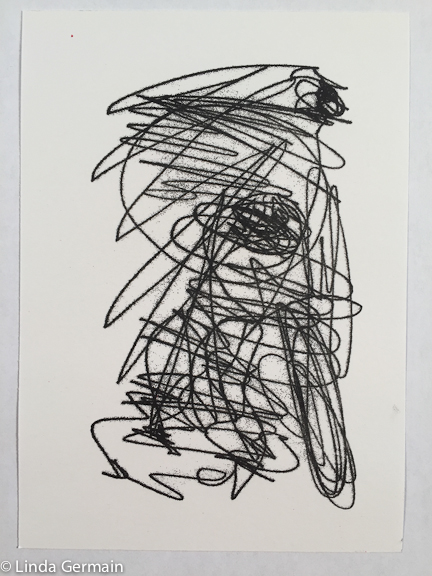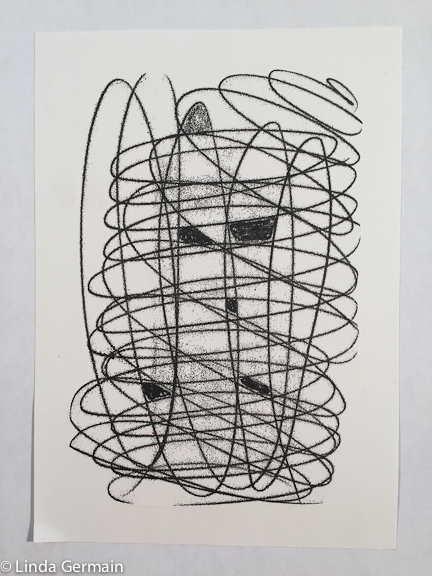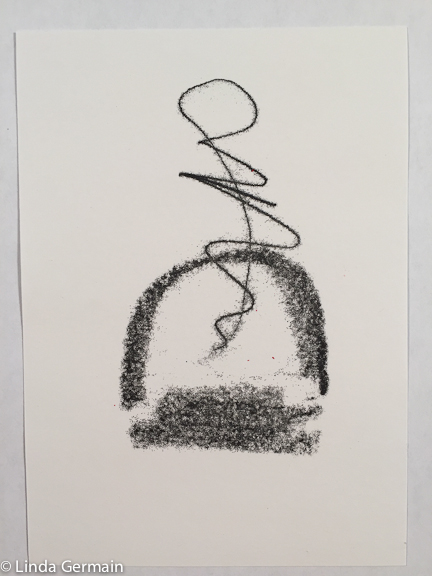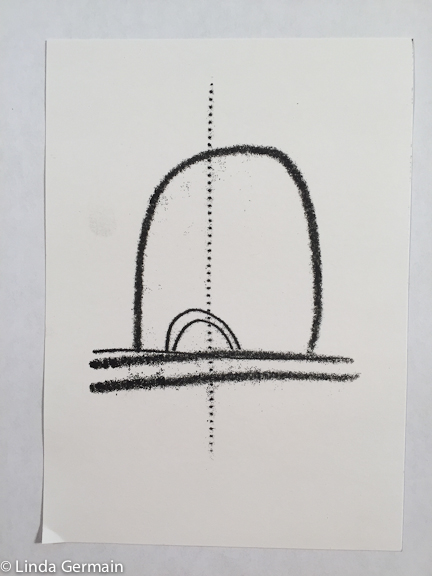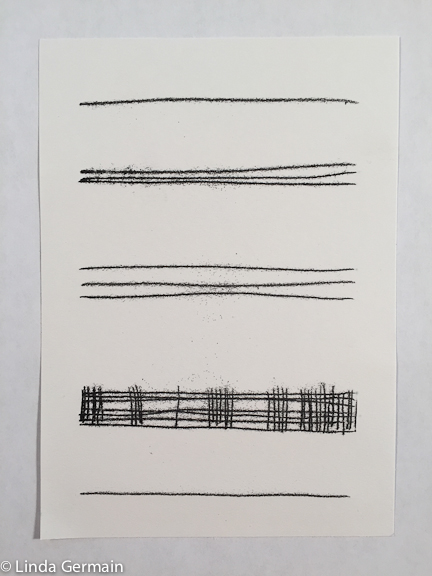Ways to use trace monotypes
You can use the fuzzy line quality to create interest in your mixed media work.
In the image above, I made the circles and dashed lines on a tea bag, using the trace monoprinting technique. Then I used that tiny print to create calm and repetition in this collage.
Tea bags and sewing patterns are great to use with the trace monotype process, because they are lightweight and durable. If printed with waterproof ink, then they make fantastic transparent collage elements.
In this collage, I cut the little vase and flower from a bigger print to add a line element focus.
When these gelatin plate prints were nearly done, I decided to add the fuzzy trace monotype line to create movement and interest. This line quality is unique to trace monotype printing.
So ask yourself, Is there a time when this fuzzy line could add something to your mixed media printmaking?
This quick flower print was built on the ghost of a screen print. So gather some “failed” prints and see if they would be a good base for a trace monotype print.
In this mixed media print above, the trace monotype print is the base and I sewed papers and prints on top of the trace monotype.
If you want to learn more about trace monotype printing, join us in the Draw into Print, online workshop. Read all the details on the workshop page. Class starts soon.
Ways to use trace monotypes Read More »
